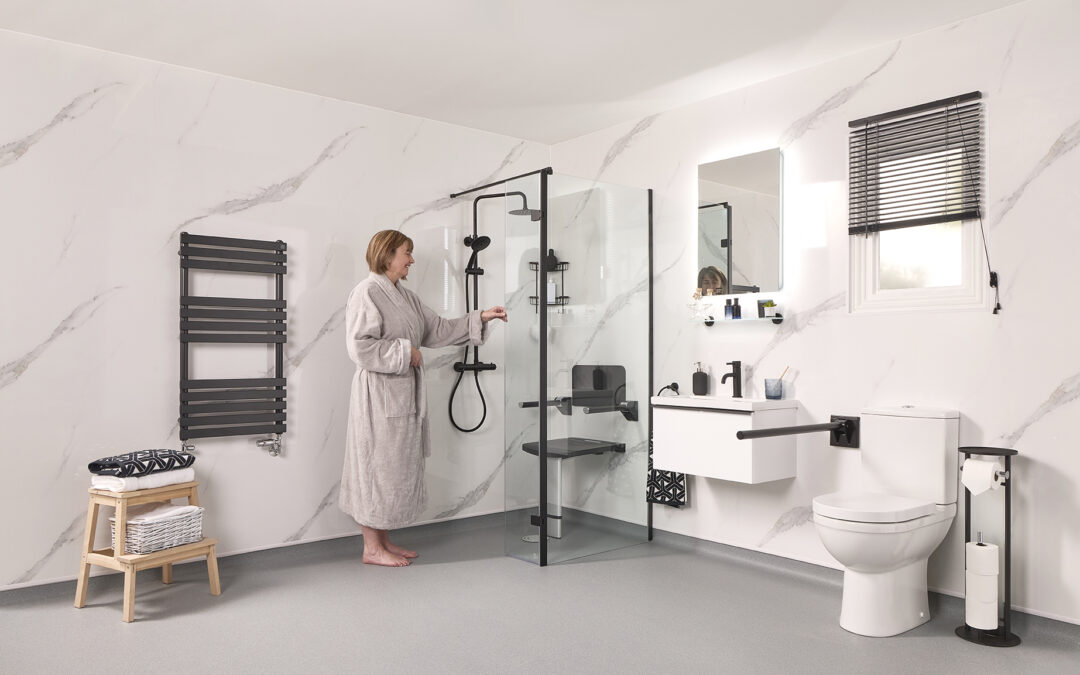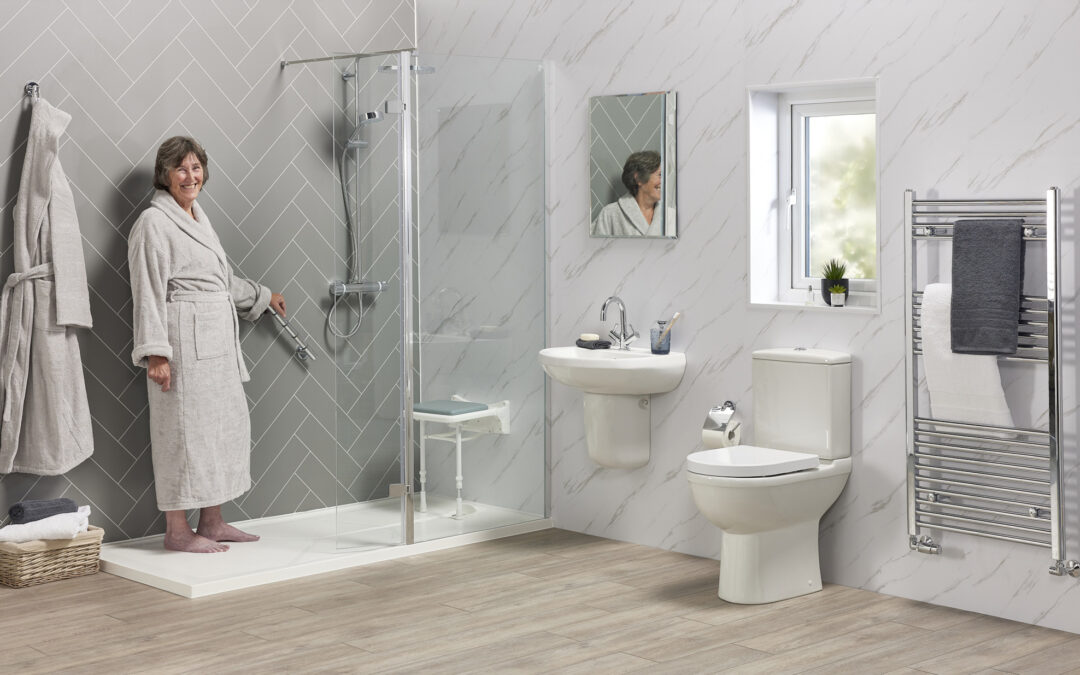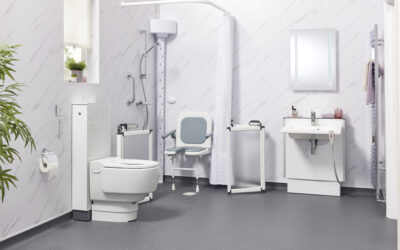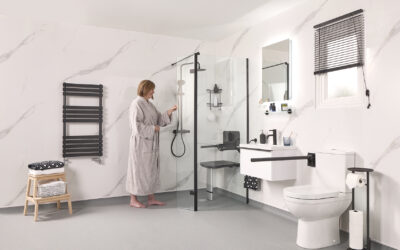Wet Rooms
Experience the ideal combination of style and function with our thoughtfully crafted wet room solutions.
Request a Brochure
Receive our full-colour latest brochure
About Wet Rooms
Discover the perfect harmony of style and functionality with our accessible wet rooms, expertly designed to meet the unique needs of the elderly and individuals with mobility challenges. Our waterproof shower rooms enhance space and provide a practical solution that prioritises accessibility. Whether you’re renovating your home or looking to future-proof your living environment, our wet room designs embody elegance and inclusivity.
Our dedicated team is committed to delivering top-quality solutions alongside valuable advice, empowering you to make informed decisions tailored to your specific requirements. By investing in wet room for elderly users that support you or your loved ones now and prepare the home for future mobility needs, you ensure a living space that combines quality, safety, and contemporary design.
Explore Our Wet Rooms
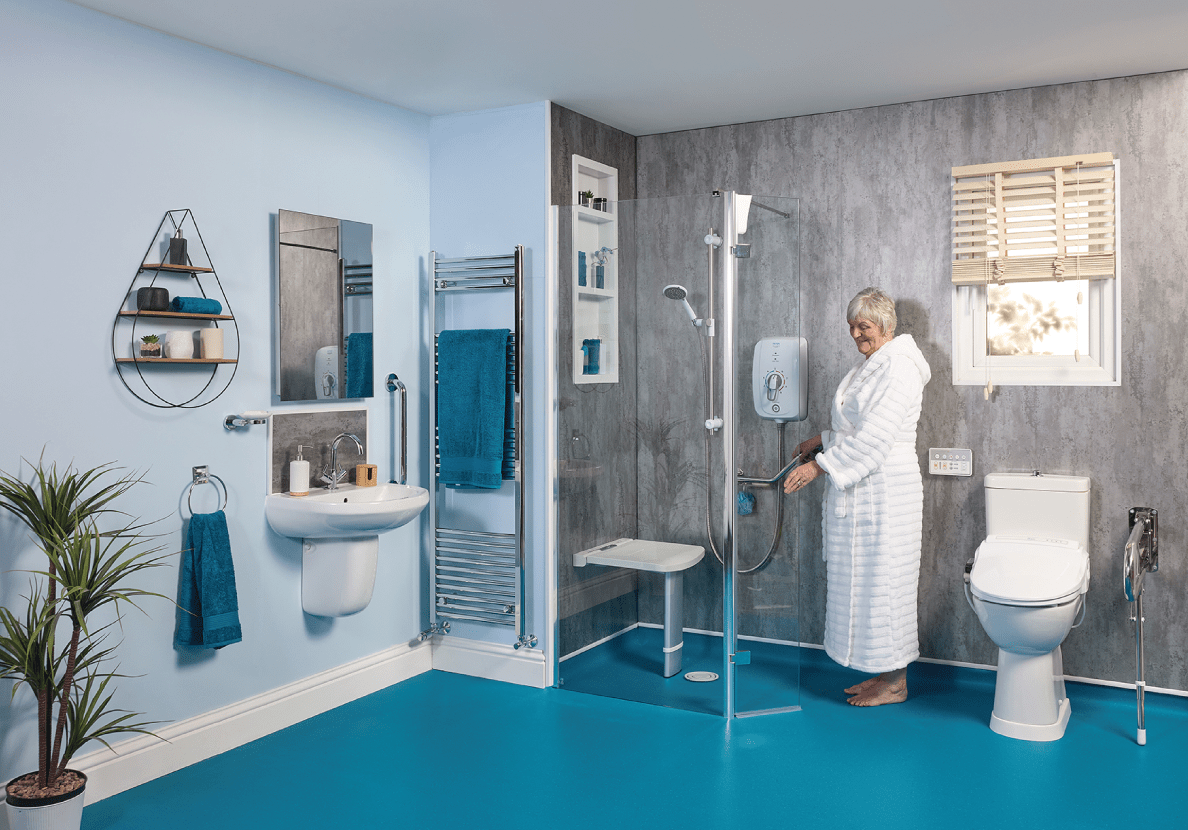

Domestic Wet Rooms
Enjoy the perfect blend of safety, comfort, and style with our expertly crafted accessible wet room, tailored to your mobility needs.
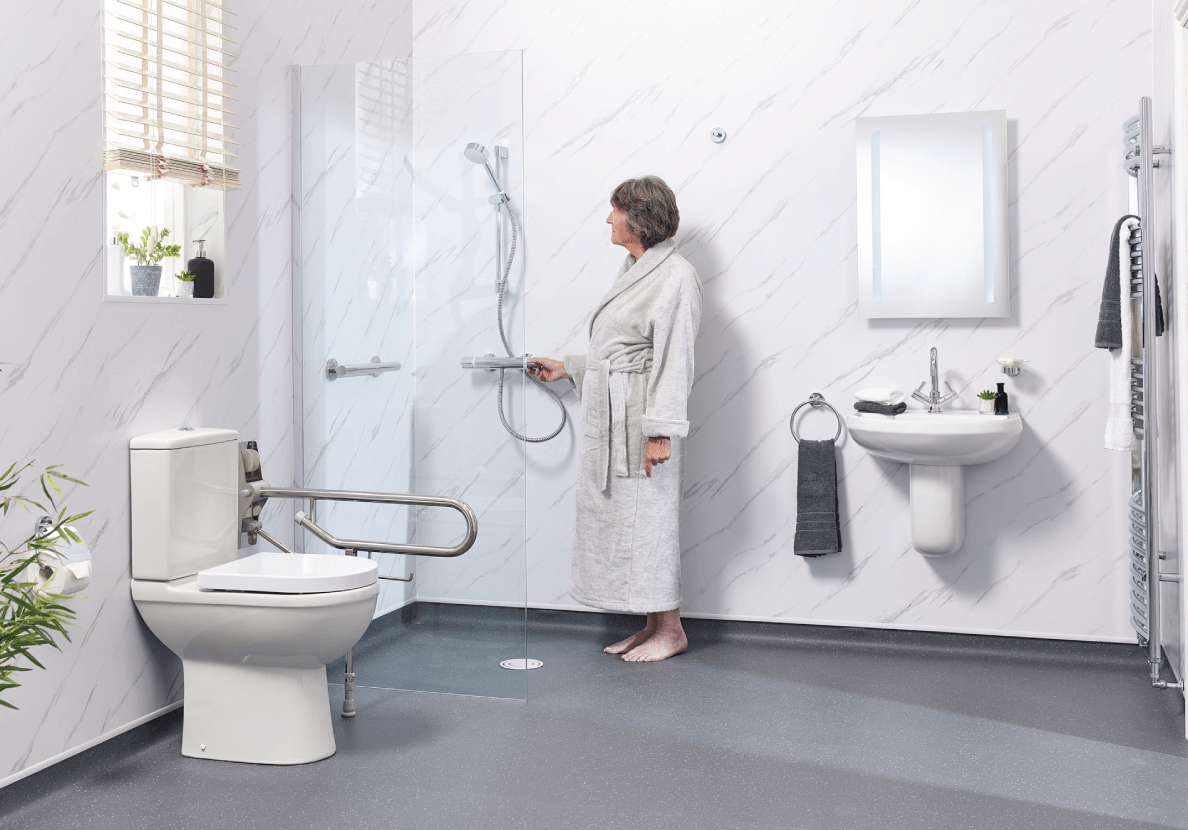

Small Wet Rooms
Maximise compact bathrooms with expertly designed small wet rooms. Stylish, functional, and tailored to fit perfectly.
































Key Features


No Step Hassle
Wet rooms eliminate the need to step over barriers, providing seamless accessibility for individuals with limited mobility, allowing them to enter and exit the space effortlessly.


Waterproof Ease
Waterproof wet rooms prevent leaks and simplify cleaning with easy-rinse surfaces. We create stylish small wet rooms, optimising function and comfort in tight spaces.


Spacious Access
Wet rooms efficiently replace enclosures, offering an open area with wheelchair access. This minimalist design improves accessibility and offers modern aesthetics.


Safety Features
Wet rooms include grab rails, shower chairs, and tailored safety equipment. Our expert team offers solutions to ensure long-term safety and convenience for all users.
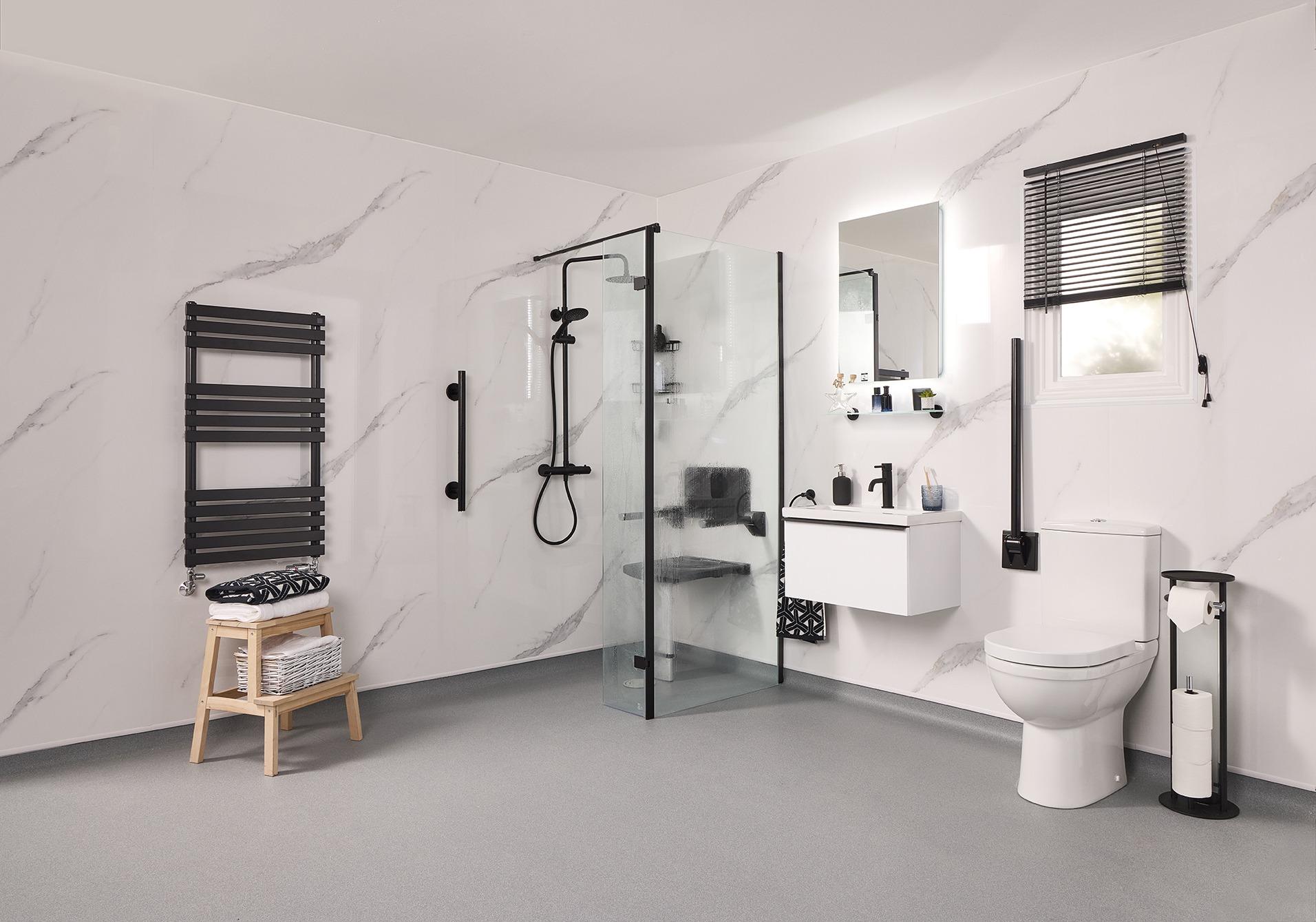

Key Features


No Step Hassle
Wet rooms eliminate the need to step over barriers, providing seamless accessibility for individuals with limited mobility, allowing them to enter and exit the space effortlessly.


Spacious Access
Wet rooms efficiently replace enclosures, offering an open area with wheelchair access. This minimalist design improves accessibility and offers modern aesthetics.




Waterproof Ease
Waterproof wet rooms prevent leaks and simplify cleaning with easy-rinse surfaces. We create stylish small wet rooms, optimising function and comfort in tight spaces.


Safety Features
Wet rooms include grab rails, shower chairs, and tailored safety equipment. Our expert team offers solutions to ensure long-term safety and convenience for all users.
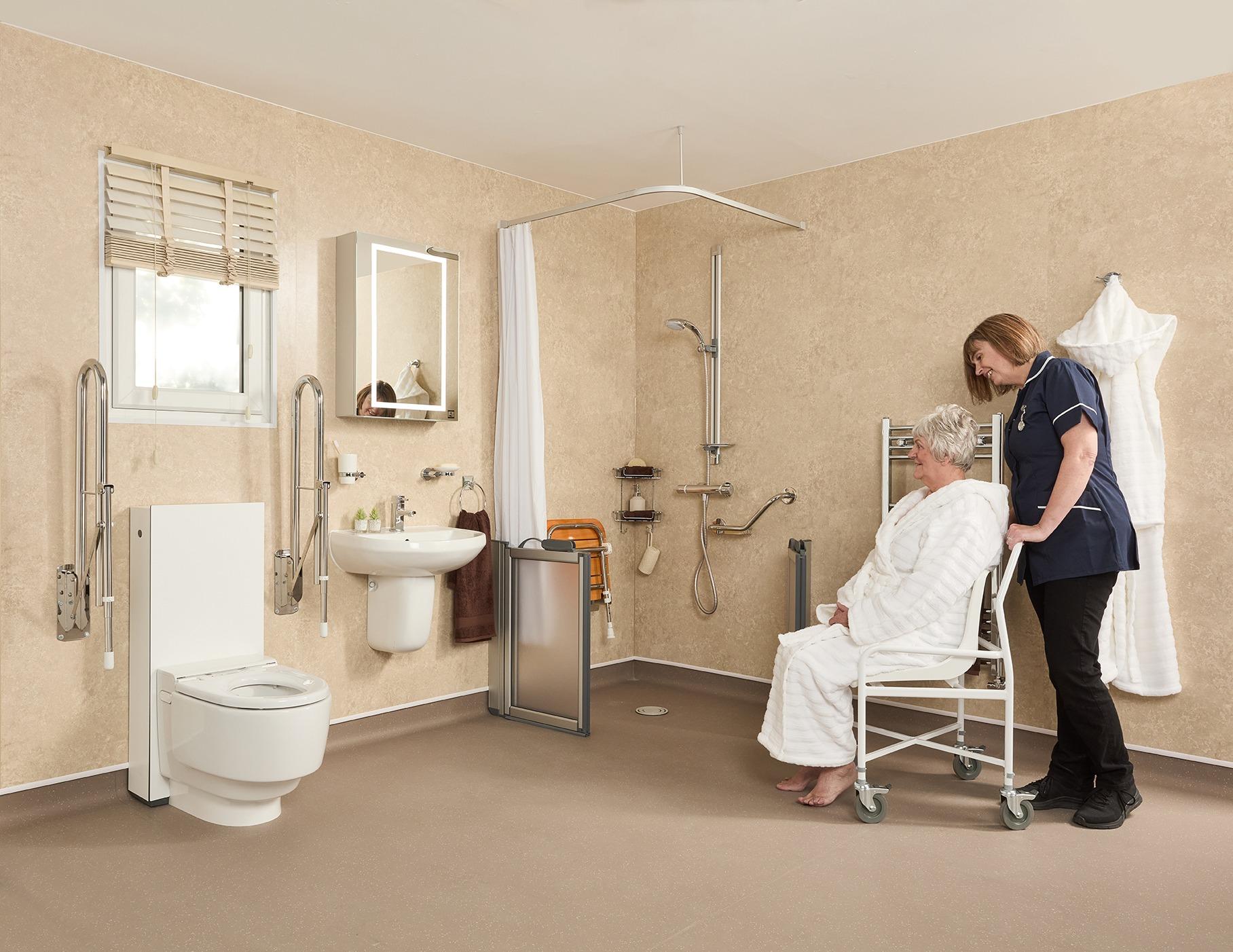

Accessible Wet Rooms for disabled and elderly
At EA Mobility, we specialise in disabled bathroom installation, transforming your bathroom into an accessible and functional space that meets your unique mobility needs. Our expert team creates modern disabled wet rooms designed with both style and practicality in mind, offering a seamless, safe environment for all users. Whether you need a custom wet room for a wheelchair user or an elderly wet room that prioritises ease of use and safety, we provide tailored solutions that enhance your daily routine.
We understand the importance of bathroom adaptations for disabled individuals, and that’s why we offer bespoke bathroom adaptations that prioritise both accessibility and comfort. From adapted bathrooms for disabled users to elderly bathing solutions, our designs are focused on improving independence and providing peace of mind. Our team ensures that every detail is taken into account, creating a bathroom that is both functional and aesthetically pleasing. Whether you’re looking for a fully accessible bathroom or specific features like a wet room for wheelchair user, trust EA Mobility to deliver exceptional, user-centric solutions that enhance your comfort and quality of life.
What our customers have to say…
Our accessible bathing solutions have been a game-changer for our customers, enhancing safety, convenience, and style without compromise.
Contact Us Today to See How We Can Help
We’re here to create the perfect accessible bathroom for you.
Our team will guide you through every step, ensuring a solution that’s practical, stylish, and perfectly suited to your needs.
Request a Free No-Obligation Home Visit
Our experts are ready to visit your home and discuss your requirements in detail.
Our phone lines are open 24/7.
What to Expect During Your
Free Home No-Obligation Visit
An Experienced Home Assessor Visit
Home Assessor will schedule a visit at a time convenient for you. Rest assured, they are fully vetted and DBS-checked for your peace of mind. The visit typically takes around an hour.
Understanding Your Bathroom Needs
The assessor will carefully listen to the issues you are experiencing with your current bathroom and discuss potential solutions to address these problems.
Design and Quotation
After assessing and measuring your bathroom, the assessor will create a design and prepare a quotation for your mobility bathroom, which they will leave with you for consideration.
VAT Exemption and Finance Options
The assessor will inform you about possible VAT exemptions on bathroom adaptations, offering significant savings. They can also present finance options for more affordable funding solutions.


Request a Free No-Obligation Home Visit
FAQs
Find answers to common questions about accessible bathrooms and how they can transform your bathroom space.
What is a Wet Room?
A wet room is a fully waterproofed bathroom where the shower area is level with the floor, allowing for an open-plan, tray-free design. This creates a sleek, modern look while maximising space, making wet rooms ideal for small bathrooms and luxury en-suites alike. With a gently sloped floor for drainage and non-slip surfaces, they offer both style and practicality.
Beyond aesthetics, wet rooms are highly functional, especially for those with mobility issues. They eliminate trip hazards and can be fitted with grab rails and seating for added accessibility. Proper tanking (waterproofing) is essential to prevent leaks and ensure long-term durability, making professional installation crucial for a high-quality finish.
How much does a disabled wet room cost?
The cost of a disabled wet room can vary hugely, depending on the size, materials, and specialist adaptations required. Essential features like slip-resistant flooring, grab rails, and shower seats can increase the cost, but they greatly enhance safety and ease of use. High-quality waterproofing and expert installation are key to preventing leaks and ensuring longevity.
Additional factors affecting the price include plumbing adjustments, drainage systems, and underfloor heating for comfort. Our team is always happy to answer your queries and provide a quote for free, after an initial visit. Investing in a professionally installed disabled wet room provides long-term benefits, improving accessibility and adding value to your home.
How to clean a wet room floor?
To clean a wet room floor effectively, start by removing any hair or debris to prevent drain blockages. Use a mild, non-abrasive cleaner with warm water and a soft mop or cloth to clean the surface without damaging the waterproof membrane. Avoid harsh chemicals, as they can degrade grout and sealants over time.
For deep cleaning, use a diluted vinegar solution or a specialist bathroom cleaner to break down limescale and soap scum. Ensure the drain is regularly flushed with hot water to maintain proper water flow. Keeping the floor dry after use and ventilating the room helps prevent mold and mildew buildup, preserving the fresh look of your wet room.
Can you have a wet room upstairs?
Yes, you can install a wet room upstairs, but it requires expert waterproofing (tanking) and proper drainage. The floor must be reinforced to handle the extra weight of water and tiling, ensuring no leaks occur. Our professional team will assess the structure and apply the necessary waterproof membranes to protect the underlying floors.
Modern wet room systems make upstairs installations easier than ever, with lightweight materials and advanced drainage solutions. Underfloor heating can also help with drying and comfort. With the right planning and professional fitting, an upstairs wet room is a stylish, practical addition that adds value to your home.
Explore Our Other Solutions
Browse our other solutions designed to fit every space, style, and need, ensuring the perfect fit for your project.
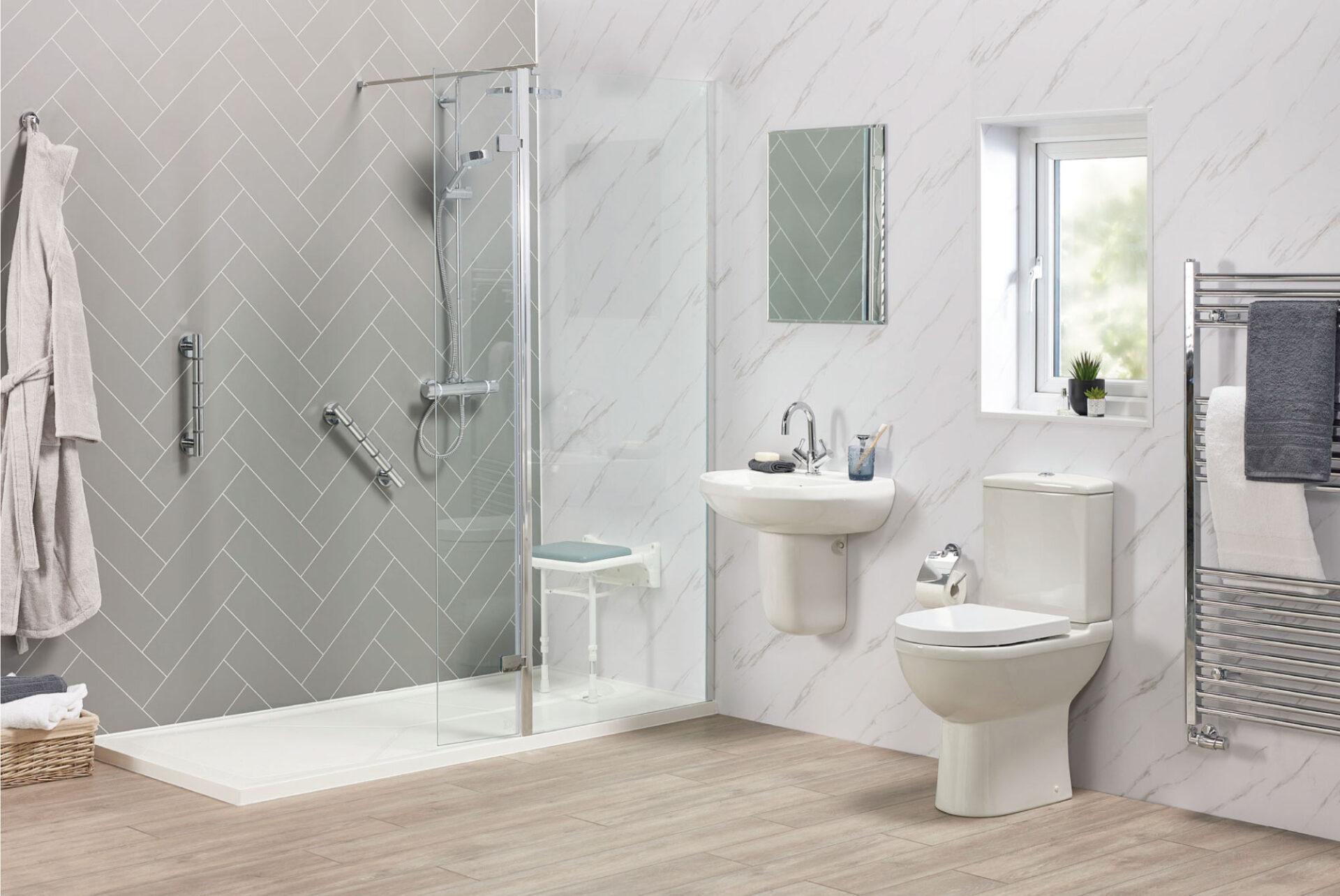

Walk-In Showers
Experience enhanced comfort and safety with our innovative walk-in showers for the elderly and disabled. At EA Mobility, we specialise in accessibility.
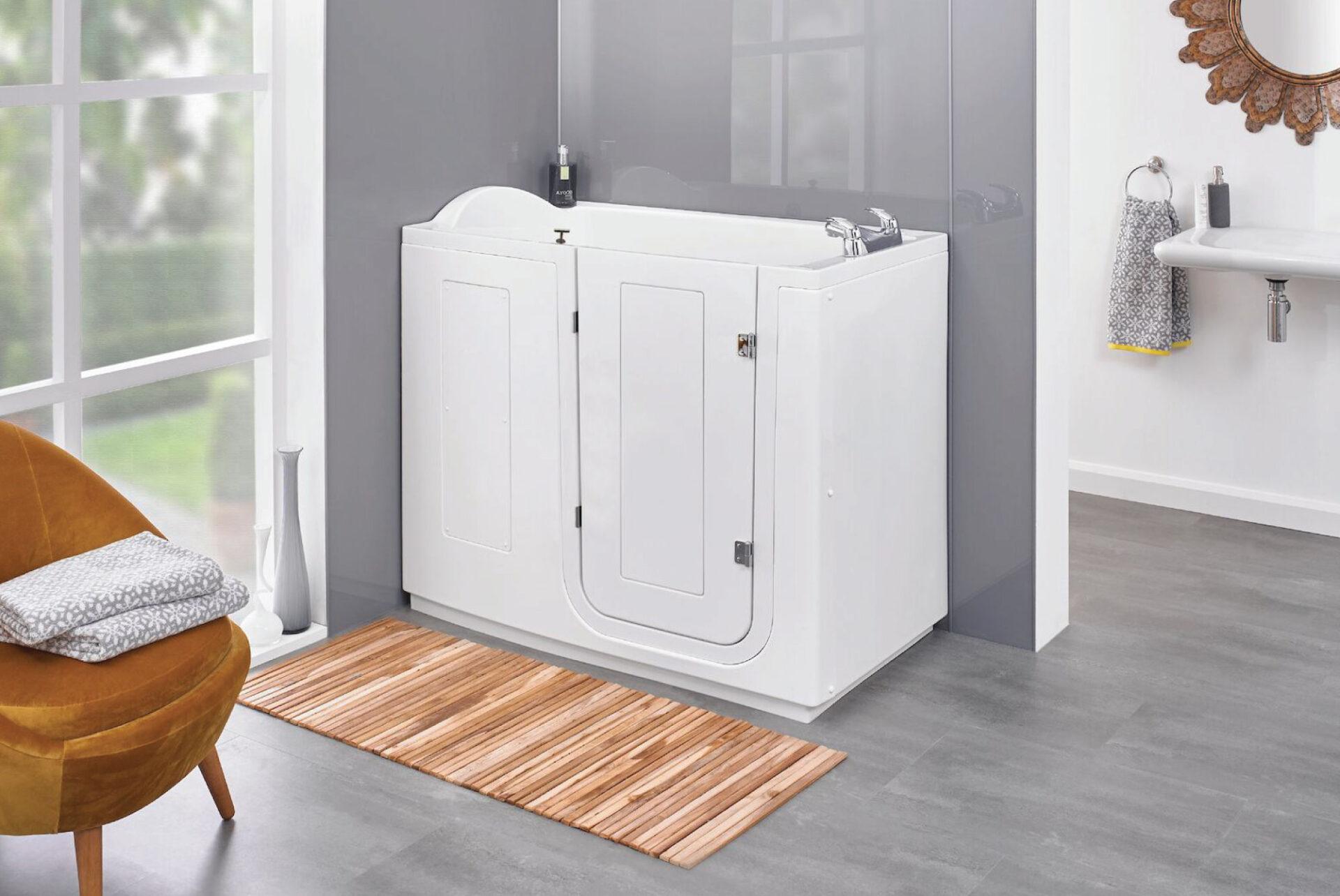

Compact Baths
Maximise space without compromising comfort with our stylish compact baths. Perfect for small bathrooms, they offer efficiency and elegance.
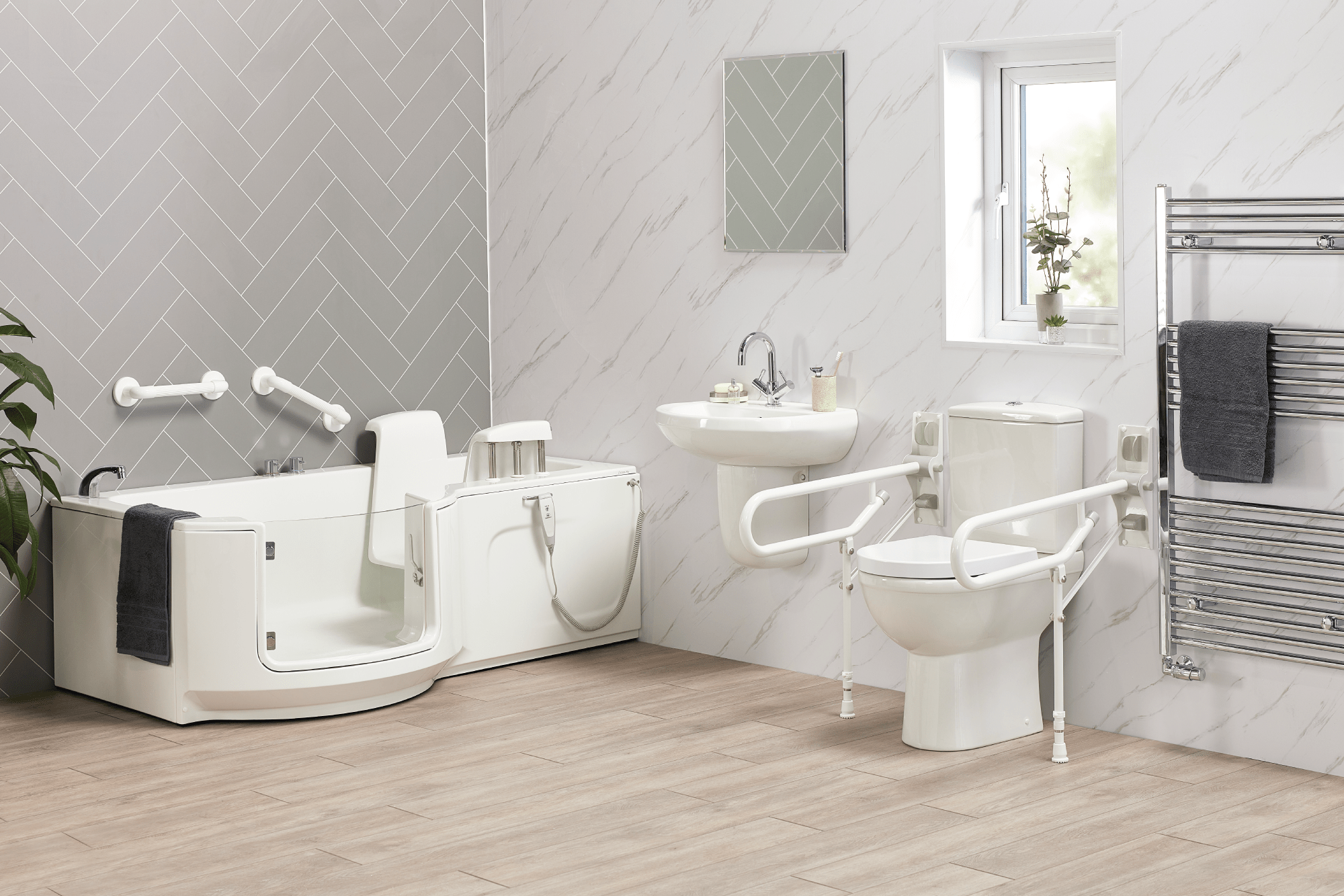

Baths with Lifts
Our solutions combine ease of use, comfort, & innovative design to enhance bathing experience, ensuring accessibility and relaxation for everyone.
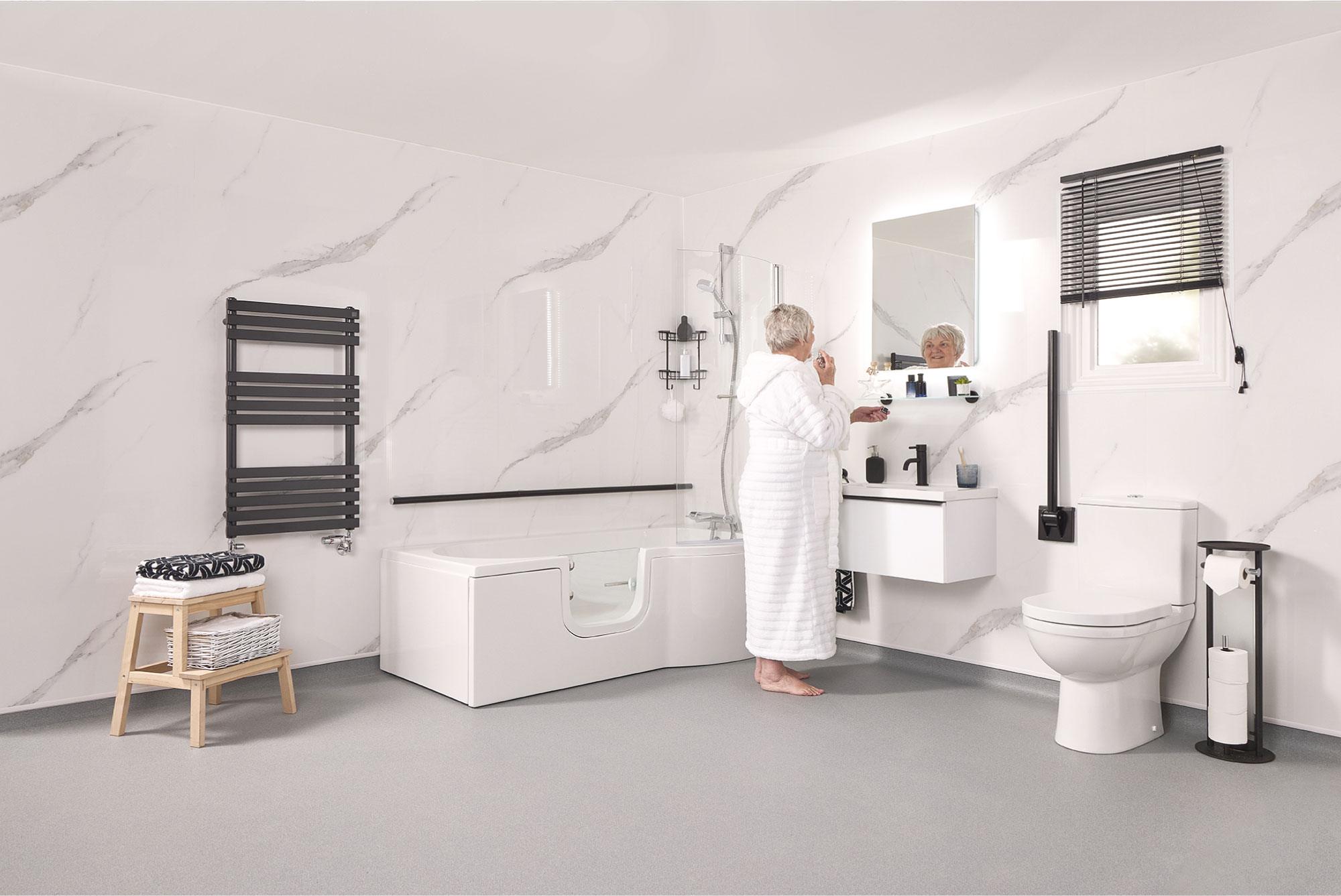

Full Length Baths
Experience luxury, comfort, and practicality with our full-length baths. Combining style and functionality, they offer relaxation and effortless access.
Help & Advice
Custom Disabled Bathroom Design and Installation Services
Having a bathroom that meets your accessibility needs is essential for maintaining independence, safety, and comfort at home. At EA Mobility, we...
Why a Wet Room Bathroom is the Ideal Solution for Accessibility?
As homes and living spaces evolve to meet the needs of all individuals, people have increasingly chosen wet room bathrooms. These innovative and...
Wet Rooms for Elderly and Disabled: 5 Key Benefits and Drawbacks
Creating a wet room can be life-changing for those with mobility challenges. Whether you're looking for a safer bathing solution for yourself or a...




